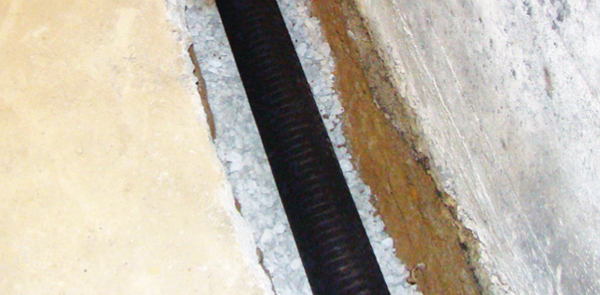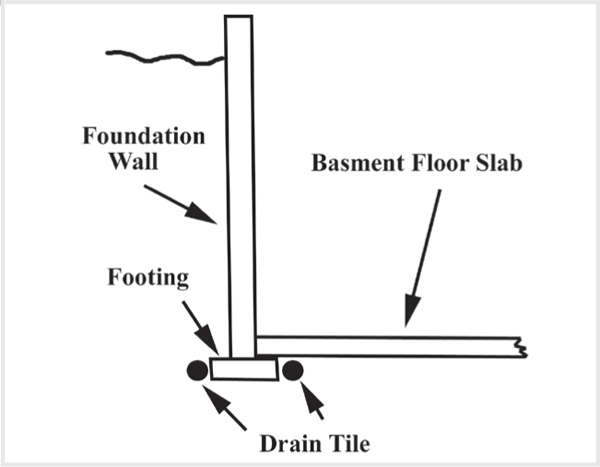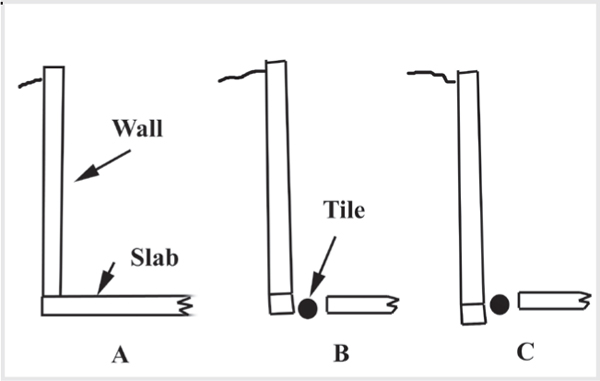Improper foundation modification results in crack growth
Jun 17, 2016

Foundation and wall cracks have been the subject of many an insurance claim. The cause of the cracks and the time for crack development are criterion for assessing whether insurance coverage is extended or denied. Cracks developing over time may be considered wear and tear and are usually not covered.
The sudden onset of cracks may be a result of a covered risk such as mine subsidence, which may be covered. The following case study illustrates a loss where very large cracks developed over a period of a few weeks.
Figure 1 (above) shows cracks that suddenly appeared in the wall on a more than 70-year-old home. Several other cracks were found throughout the basement. According to the insured owner, the cracks appeared within a few weeks of having initiated installation of a tile system in the basement.

Figure 2 is a view of the unfinished installation of a drainage tile in the basement. The basement wall is at the right and a trench has been excavated to make room for the black drainage tile shown in the photo. The slab was cut next to the foundation wall around the entire basement to accommodate the drainage tile that was then connected to a sump.
During this work, rapid crack development occurred throughout the home. The building had been in the possession of the insured for several years. There was no history of subsidence in the area and no weather-related influence that could have initiated crack development.

Figure 3 is a drawing of a typical foundation wall design for a home. The foundation wall sits on a footing that distributes the load on the soil below to avoid excessive settling. The drain tiles are placed on either side of the foundation wall. The basement floor slab plays little role in supporting the building.

Figure 4 illustrates the foundation situation that is the subject of this loss. The insured's old home had a raft foundation design where the foundation wall is located on top of the slab and relies on the slab to distribute the load to the sub soil, Figure 4A. The home did not have a drainage tile system and the basement floor would often be covered with puddles from heavy rains. This motivated the insured to install a tile system.
Figure 4B shows the excavation performed by the insured. The slab has been cut along the perimeter of the floor slab to make room for the drainage tile. No building permit was obtained for this work.
The load-carrying capacity of the slab has been removed and the much reduced bearing area of the wall base has caused additional pressure against the sub soil. This was sufficient to cause rapid settling of the foundation wall as illustrated in Figure 4C.
The insured had significantly degraded the load-carrying capacity of the foundation wall, resulting in rapid settling and crack generation throughout the building. This was not considered a covered loss, in this case.